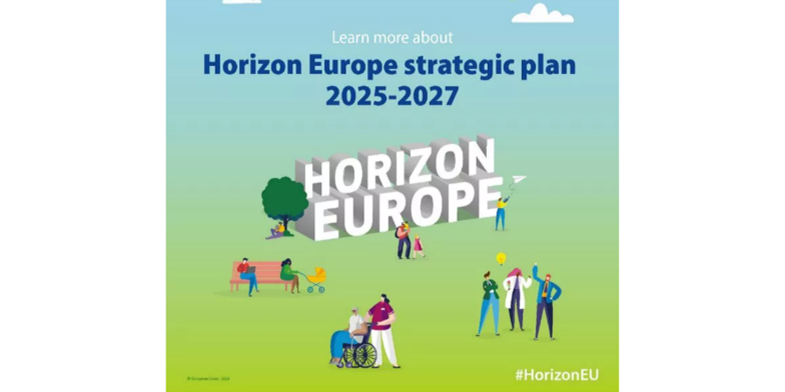The Commission has adopted the second strategic plan for Horizon Europe. The plan, announced at the flagship Research and Innovation Days, sets out three key strategic orientations for EU’s research and innovation funding for the last three years of the programme (2025-2027):
- Green transition;
- Digital transition;
- A more resilient, competitive, inclusive and democratic Europe.
These orientations aim to address key global challenges such as climate change, loss of biodiversity, the digital transition and an ageing population.
Open strategic autonomy and securing Europe’s leading role in developing and deploying critical technologies are overarching principles that apply across all three key strategic orientations.
The strategic plan raises the ambition of Horizon Europe on biodiversity and commits to a target of 10% of the Horizon Europe’s total budget for 2025-2027 dedicated to biodiversity-related topics. This new commitment complements existing targets for climate expenditure (35% over the lifetime of Horizon Europe) and main digital activities (€13 billion over the same period).
The strategic plan identifies nine new European co-funded and co-programmed partnerships: Brain Health, Forests and Forestry for a Sustainable Future, Innovative Materials for EU, Raw Materials for the Green and Digital Transition, Resilient Cultural Heritage, Social Transformations and Resilience, Solar Photovoltaics, Textiles of the Future, and Virtual Worlds.
The strategic plan also provides an overview of the achievement of EU Missions over their first years. As a novelty, the stategy plan introduces the New European Bauhaus (NEB) Facility. The New European Bauhaus is a pioneering movement that brings citizens, municipalities, experts, businesses, universities and institutions together to reimagine and jointly bring about sustainable and inclusive living in Europe and beyond. Given the cross-cutting nature of the NEB and of its R&I content, the NEB will be implemented as a cross-cluster issue in the Horizon Europe work programmes for 2025-2027. This R&I component will be complemented by a roll-out component that will be delivered through synergies with other EU programmes. Together, these two components will be referred to as the ‘NEB Facility’.
The plan addresses a number of specific issues, such as the balance of research and innovation and the integration of social sciences and humanities. On the former, the strategic plan commits to provide a balanced support to activities with a range of maturity and of technology readiness levels, ranging from knowledge-generating and early-stage research to innovation, to demonstration and first deployment activities, such as in model regions, living labs and lighthouses. It also commits to strengthen collaborative research projects with low technology readiness levels and maturity levels under Pillar II.
Effectively integrating social sciences and humanities into all clusters, including all missions and partnerships, is a key principle of the programme. This is reflected by flagging specific topics and requesting an assessment of their societal impact. Social sciences and humanities will be integrated into relevant projects, from their drafting to their selection and evaluation.
Next Steps
The key strategic orientations are the guiding principles for Horizon Europe and will be implemented through the work programmes. Work programmes set out the funding opportunities for research and innovation activities through thematic calls for proposals and topics.
The Horizon Europe main Work Programme 2025 will be developed following the orientations of the newly adopted strategic plan. In April 2024, the Commission will launch a feedback opportunity for the Work Programme 2025 open to all stakeholders.
Source: European Commission | Press Corner (https://shorturl.at/wxABZ)
